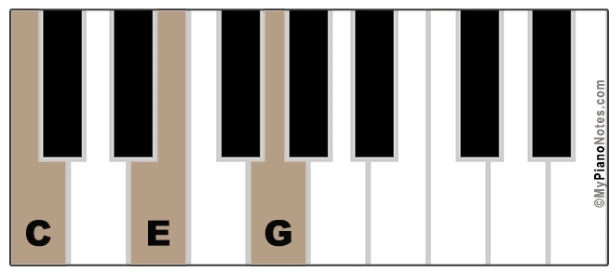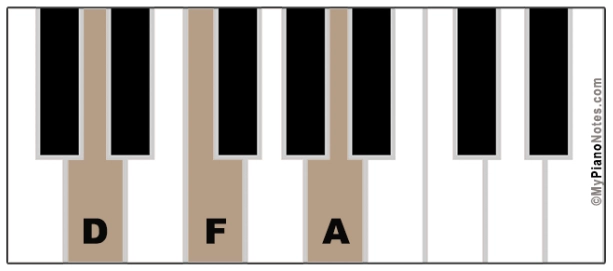Chord

When ever you call multiple notes together, it's called a chord.
The easiest chords are the triads, as the name suggests they're three notes played together with a space between each other as show on the picture above. The shape is root + skip 1 note + third note + skip 1 note + fifth note and can ba applied over any note in our Scale, to create 7 possible chords that we can use.
When the root and second note of a chord are 4 semitones apart, we call it a major chord (e.g.: C + E + G). This typically sounds "happy" to us.
When the root and second note of a chord are 3 semitones apart, we call it a minor chord (e.g.: D + F + A). This typically sounds "sad" to us.
In the major scale, the chords are: I - ii - iii - IV - V - vi - vii°. Major chords are capital numerals, minor chords are lowercase numerals and the vii° is diminished.
There are many variations possible on these chords, many of which involve notes that fall outside our scale. For now, we stick only to the notes in the scale, also known as the "diatonic scale", but just know that there are many common exceptions to this scale that sound good. At the end of the day, that's all that matters. What ever sounds good is good.
Relevant Note(s): Harmony Chord Progression Chord Progression Chord Planing
